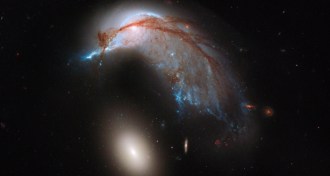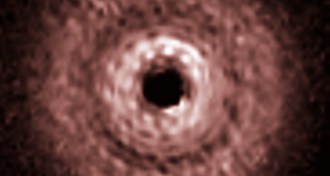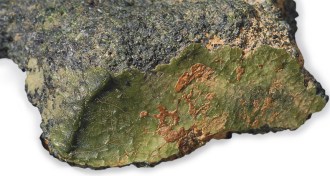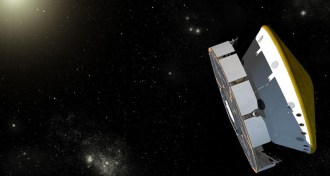Space
Sign up for our newsletter
We summarize the week's scientific breakthroughs every Thursday.
-
 Astronomy
AstronomyCradled galaxies betray violent past
Hubble snaps ‘the Penguin’ and its egg-shaped companion.
-
 Astronomy
AstronomyHubble finds hints of a planet oddly far-flung from its star
If confirmed, the dark gap in space debris will challenge astronomers' theories.
By Andrew Grant -

-
 Planetary Science
Planetary ScienceThirty years to Mars
Excerpt from the June 15, 1963, issue of Science News Letter.
By Nathan Seppa -
 Health & Medicine
Health & MedicineMars trip would deliver big radiation dose
Curiosity instrument confirms expectation of major exposures.
-
 Planetary Science
Planetary ScienceGone perhaps, but Kepler won’t soon be forgotten
Astronomers look forward to building on the planet-hunting telescope's discoveries.
By Andrew Grant -
 Space
SpaceKepler mission may be over
The planet-hunting telescope has been crippled by the failure of two out of four pointing devices.
By Andrew Grant -
 Space
SpaceMoon’s water may have earthly origins
Ratio of hydrogen to deuterium suggests molecule on both orbs has a common source.
By Andrew Grant -
 Space
SpaceAtom’s core gets pear-shaped
Tapering asymmetry of some nuclei confirms predictions.
By Andrew Grant -
 Space
SpaceSnapshots reveal details of Saturn’s gigantic hurricane
Storm dwarfs anything on Earth, with enormous eye and whipping winds.
By Erin Wayman -
 Space
SpaceLHC detects asymmetry in particle’s decay
While interesting, the imbalance in the decay of strange B mesons isn’t large enough to explain why matter predominates over antimatter in the universe.
By Andrew Grant -
 Space
SpaceComet’s water still hanging around on Jupiter
Shoemaker-Levy 9 supplied almost all of aqueous part of the planet's upper atmosphere.
By Andrew Grant